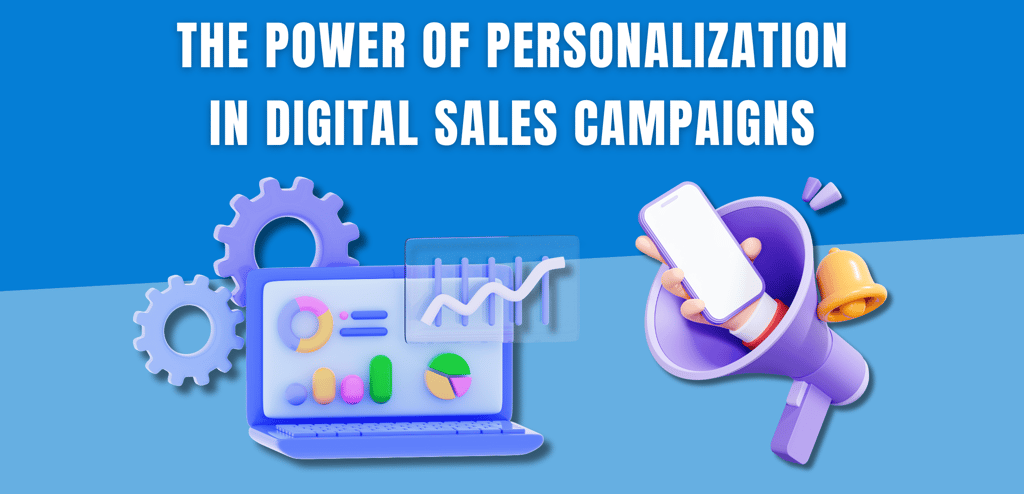
The Power of Personalization in Digital Sales Campaigns
By AZ Konnect Team
7/19/20243 min read


In the highly competitive landscape of digital marketing, personalization has emerged as a game-changer. It allows businesses to connect with their audience on a deeper level, driving engagement, fostering loyalty, and ultimately increasing sales. Personalized digital sales campaigns are not just a trend but a necessity for brands looking to stay relevant and effective. Here’s a deep dive into the power of personalization in digital sales campaigns and how to leverage it for success.
Why Personalization Matters
Enhanced Customer Experience
Tailored Content: Personalization helps in delivering content that is relevant to the individual’s needs, preferences, and behaviors, making the customer feel valued and understood.
Increased Engagement: Personalized experiences are more engaging, keeping the audience interested and invested in what the brand has to offer.
Improved Conversion Rates
Targeted Offers: Personalized offers and recommendations are more likely to resonate with potential buyers, leading to higher conversion rates.
Reduced Friction: By anticipating and addressing the customer’s specific needs, personalized campaigns can streamline the buying process and reduce friction.
Higher Customer Loyalty
Strong Relationships: Personalization fosters stronger relationships by making customers feel recognized and appreciated, encouraging repeat business.
Customer Retention: Happy customers are more likely to stay loyal to the brand, leading to improved customer retention rates.
Strategies for Implementing Personalization in Digital Sales Campaigns
Collect and Analyze Data
Customer Data: Gather data from various touchpoints, including website interactions, purchase history, and social media engagement.
Behavioural Insights: Use analytics tools to gain insights into customer behaviour and preferences, which can inform your personalization efforts.
Segment Your Audience
Demographic Segmentation: Group your audience based on demographic factors such as age, gender, location, and income.
Behavioural Segmentation: Segment customers based on their behaviour, such as purchase history, browsing habits, and engagement levels.
Leverage Advanced Technologies
AI and Machine Learning: Utilize AI and machine learning to analyze large datasets and predict customer preferences and behaviours.
Personalization Engines: Implement personalization engines that automate the delivery of tailored content and offers to each customer.
Create Personalized Content
Dynamic Content: Use dynamic content that changes based on the recipient’s preferences and behaviour.
Relevant Recommendations: Provide product or content recommendations that are relevant to the individual’s interests and past interactions.
Personalize Email Campaigns
Customized Subject Lines: Use the recipient’s name and other personalized elements in email subject lines to grab attention.
Tailored Messaging: Craft email content that addresses the specific needs and preferences of each segment of your audience.
Use Personalized Landing Pages
Customized Experiences: Create landing pages that are tailored to the visitor’s profile, ensuring a consistent and relevant experience from email to website.
Relevant Offers: Display offers and content that align with the visitor’s interests and past behaviour.
Engage Through Personalized Ads
Targeted Advertising: Use data-driven insights to create highly targeted ads that speak directly to the needs and preferences of different audience segments.
Dynamic Retargeting: Implement dynamic retargeting ads that show personalized product recommendations based on the user’s browsing history.
Measuring the Impact of Personalization
Track Key Metrics
Engagement Rates: Monitor metrics such as open rates, click-through rates, and time spent on site to gauge engagement levels.
Conversion Rates: Measure the effectiveness of personalized campaigns by tracking conversion rates and sales figures.
Customer Feedback
Surveys and Feedback: Collect feedback from customers to understand their experiences and identify areas for improvement.
Net Promoter Score (NPS): Use NPS to measure customer satisfaction and loyalty.
A/B Testing
Experiment and Optimize: Conduct A/B testing to compare personalized and non-personalized content, ads, and emails to determine what works best.
Conclusion
The power of personalization in digital sales campaigns cannot be overstated. By leveraging data and advanced technologies to deliver tailored experiences, businesses can significantly enhance customer engagement, boost conversion rates, and build lasting loyalty. Implementing personalization requires a strategic approach, but the results are well worth the effort. Embrace personalization to create meaningful connections with your audience and drive your digital sales campaigns to new heights of success.
Subscribe To Our Newsletter


